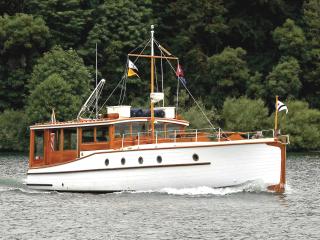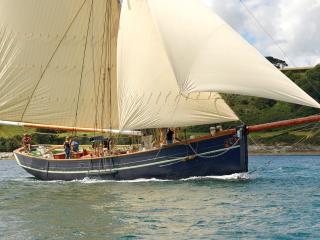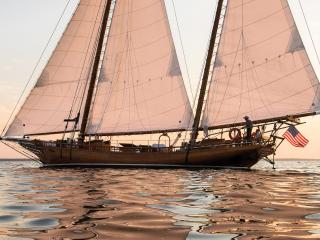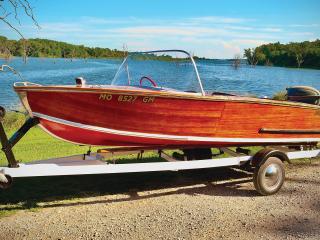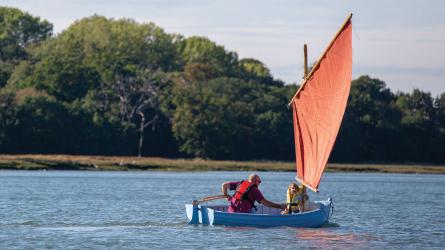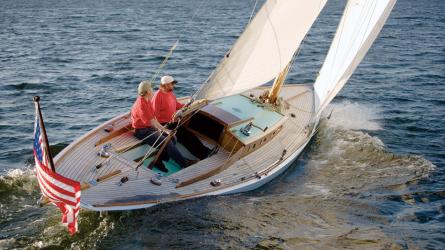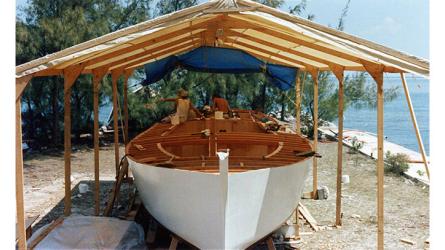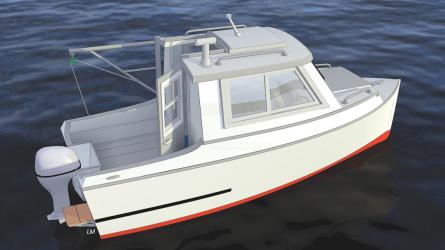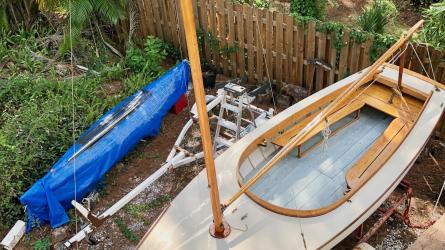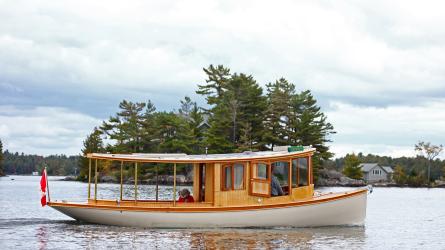November / December 2020
Building a Midget Flyer Runabout Part 3
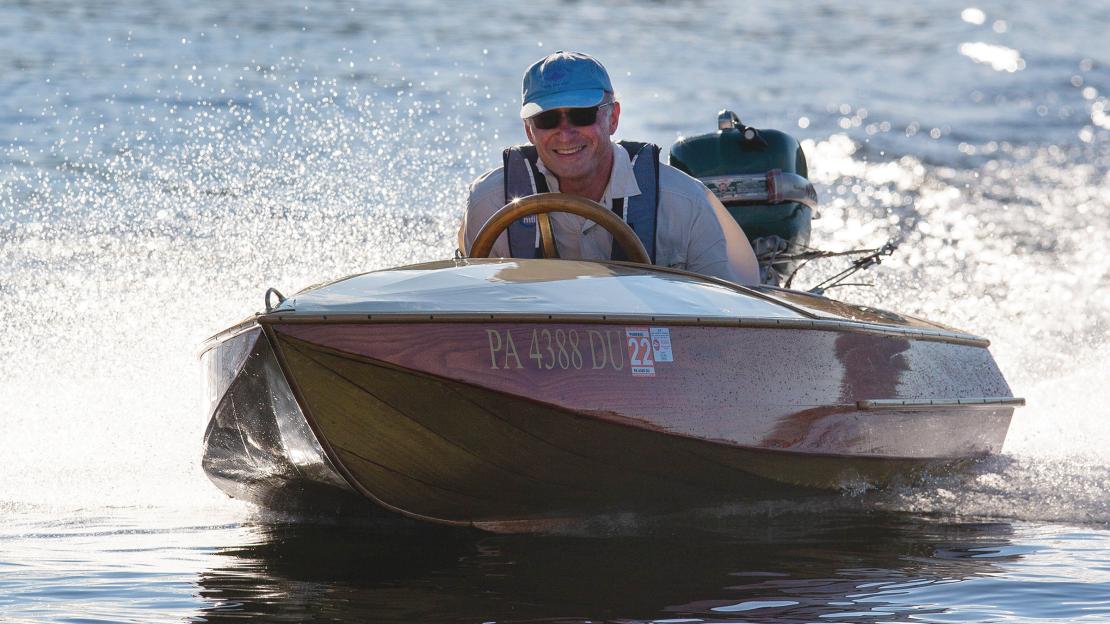
In the previous two parts of this series, which appeared in WB Nos. 275 and 276, we built and set up the frames and backbone of this classic mini-runabout. We then installed the chines, battens, planking, and afterdeck. Here, we complete the boat, adding the interior details, the fabric foredeck, and fittings.
Step 22—Install the steering and seat brace, and the floorboards.
I centered the steering wheel on my Flyer in order to center the weight of a solo operator. This has an added benefit when two people are aboard; either of them can steer. A centerline brace supports the seat back. I made it of 7⁄16"-thick paulownia, 11⁄4" wide and about 16" long, and cut it to fit between the back of the deckbeam and the keel (photos 22a and 22b). At the keel it is supported by a 11⁄4" × 21⁄2" cleat cut to a 20-degree angle.
I made a similar support for the steering column out of 3⁄4" sassafras. It runs from the aft side of deckbeam 3 to the keel (see photo 22b), with softly curved edges. These curves are to my own design, and other builders may have different ideas. Wherever you locate your wheel, be sure to leave adequate legroom on either side of the brace
To read the rest of this article:
Click the button below to log into your Digital Issue Access account.
No digital access? Subscribe or upgrade to a WoodenBoat Digital Subscription and finish reading this article as well as every article we have published for the past 50-years.
ACCESS TO EXPERIENCE
Subscribe Today
1 YEAR SUBSCRIPTION (6 ISSUES)
PLUS ACCESS TO MORE THAN 300 DIGITAL BACK ISSUES
DIGITAL $29.00
PRINT+DIGITAL $42.95
Subscribe
To read articles from previous issues, you can purchase the issue at The WoodenBoat Store link below.
 Purchase this issue from
Purchase this issue from
